
How to Use GPS Neo 6M Module: Examples, Pinouts, and Specs
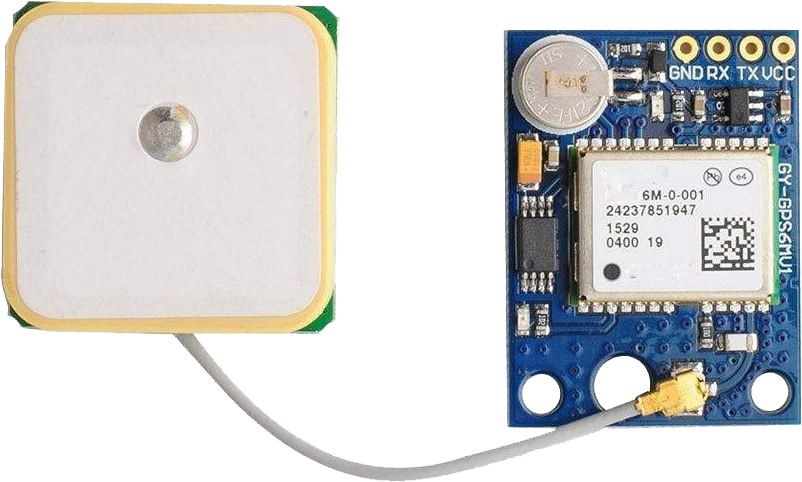
 Design with GPS Neo 6M Module in Cirkit Designer
Design with GPS Neo 6M Module in Cirkit DesignerIntroduction
The GPS Neo 6M Module is a compact GPS receiver designed to provide accurate positioning data. It is built around the NEO-6M chipset, which offers high sensitivity, fast acquisition times, and reliable performance. This module is widely used in applications such as robotics, drones, navigation systems, and other projects requiring precise location tracking. Its small size and ease of integration make it a popular choice for both hobbyists and professionals.
Explore Projects Built with GPS Neo 6M Module
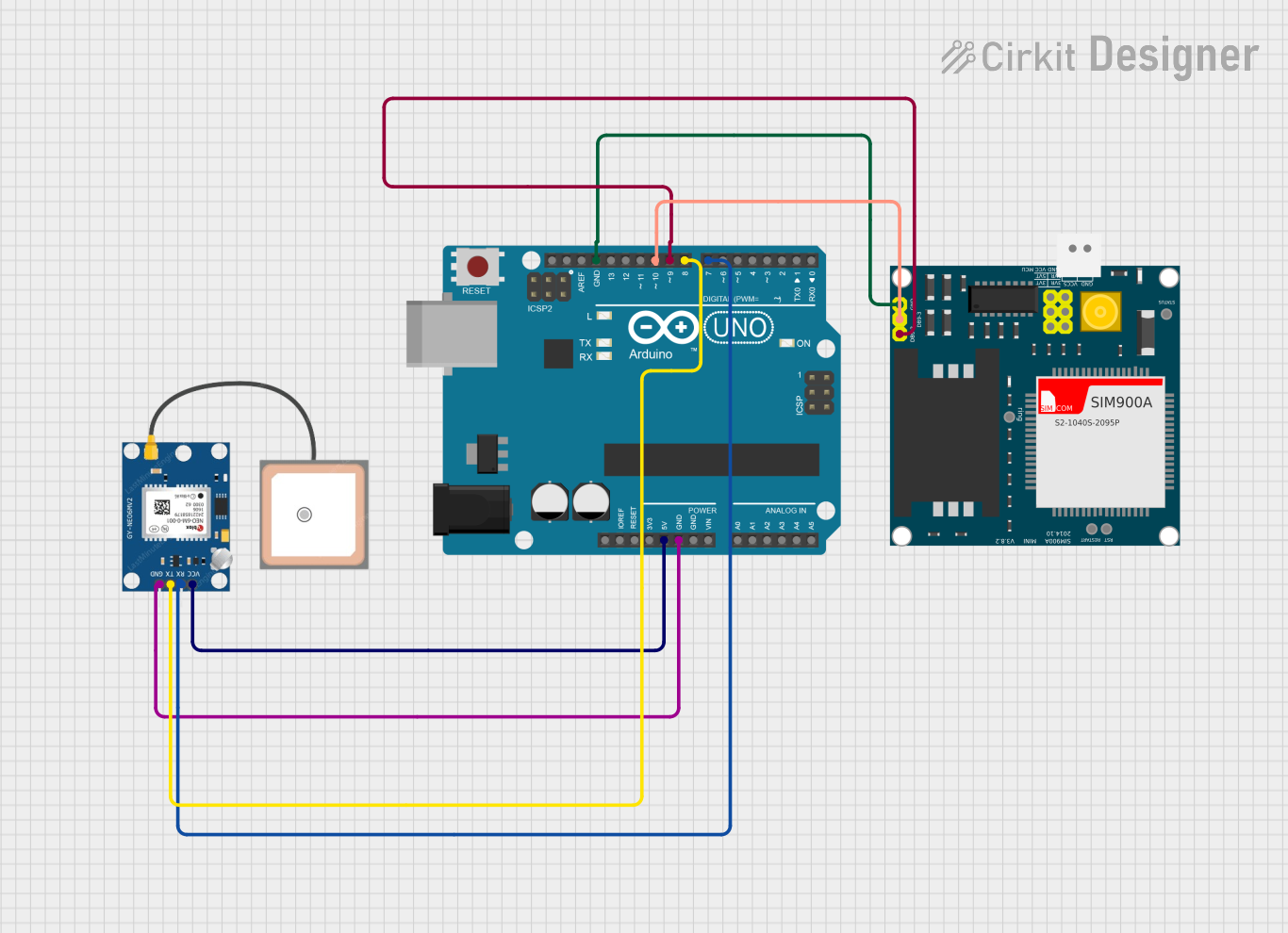
 Open Project in Cirkit Designer
Open Project in Cirkit Designer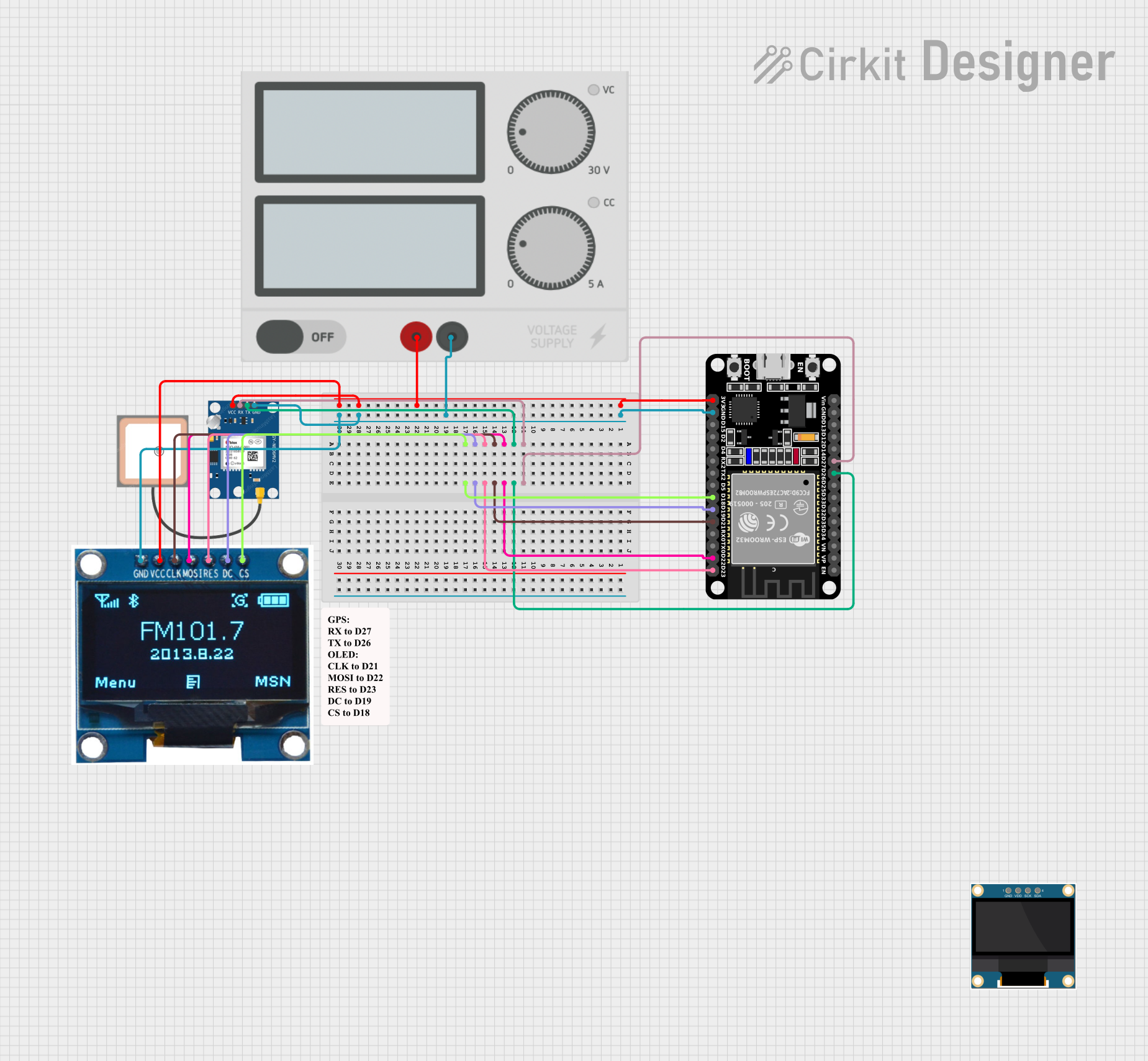
 Open Project in Cirkit Designer
Open Project in Cirkit Designer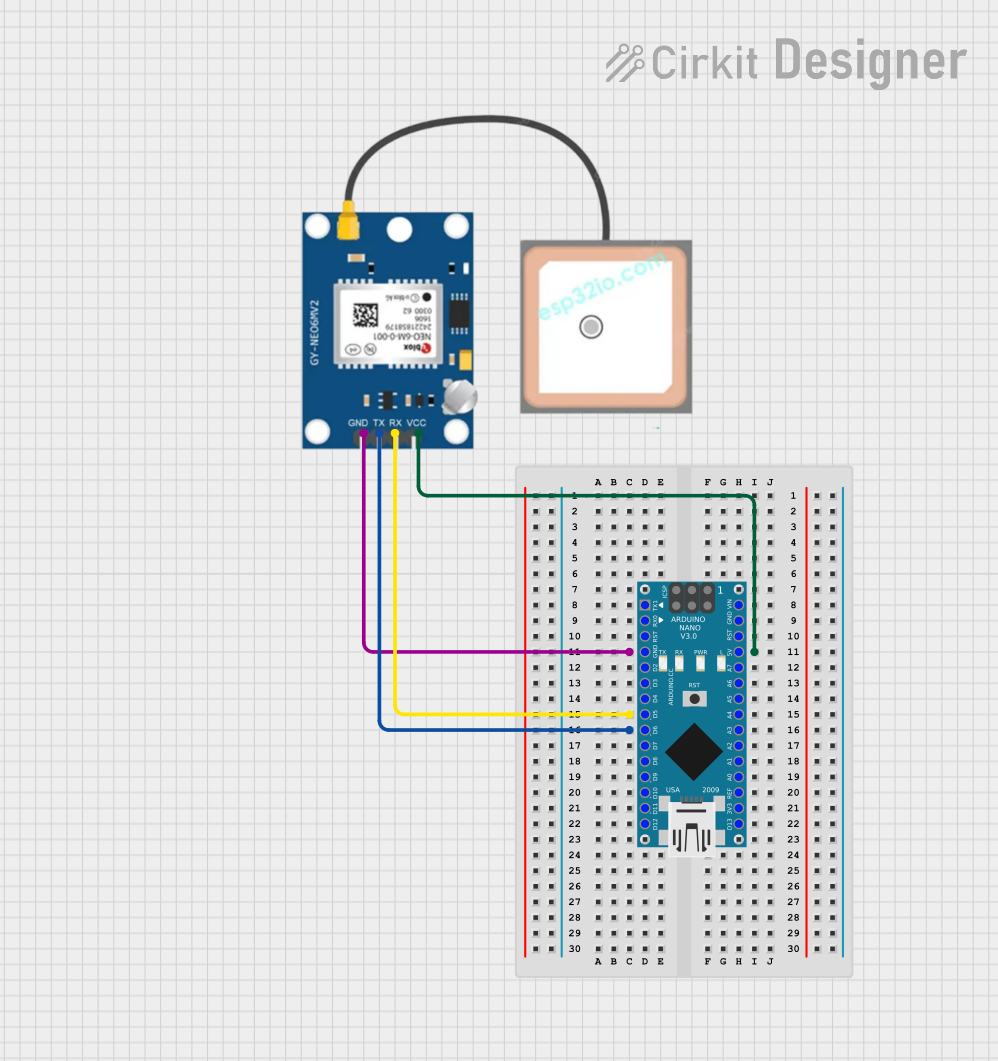
 Open Project in Cirkit Designer
Open Project in Cirkit Designer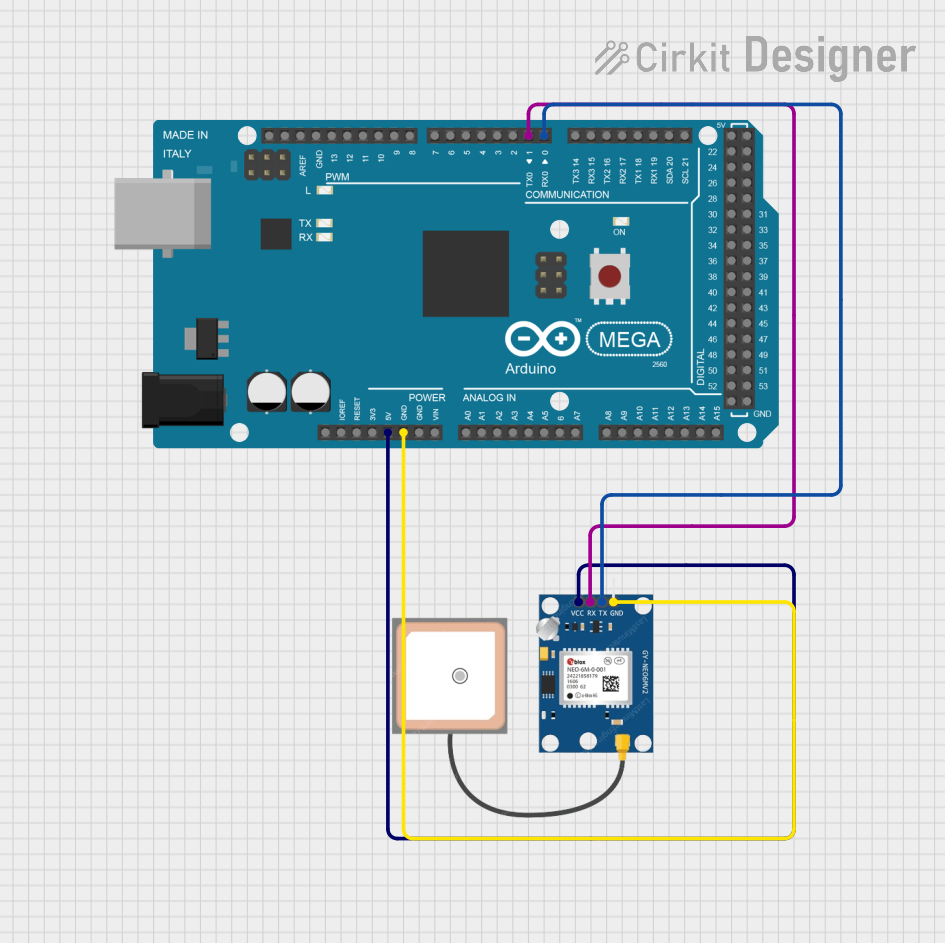
 Open Project in Cirkit Designer
Open Project in Cirkit DesignerExplore Projects Built with GPS Neo 6M Module

 Open Project in Cirkit Designer
Open Project in Cirkit Designer
 Open Project in Cirkit Designer
Open Project in Cirkit Designer
 Open Project in Cirkit Designer
Open Project in Cirkit Designer
 Open Project in Cirkit Designer
Open Project in Cirkit DesignerTechnical Specifications
The GPS Neo 6M Module comes with the following key technical specifications:
| Parameter | Specification |
|---|---|
| Chipset | NEO-6M |
| Input Voltage | 3.3V to 5V |
| Operating Current | 45mA (typical) |
| Positioning Accuracy | 2.5 meters CEP (Circular Error Probable) |
| Communication Protocol | UART (default) |
| Baud Rate (default) | 9600 bps |
| Antenna | External active antenna (included) |
| Backup Battery | CR1220 (for saving configuration and time data) |
| Operating Temperature | -40°C to +85°C |
| Dimensions | 25mm x 35mm |
Pin Configuration and Descriptions
The GPS Neo 6M Module typically has a 4-pin interface. The pinout is as follows:
| Pin | Name | Description |
|---|---|---|
| 1 | VCC | Power input (3.3V to 5V) |
| 2 | GND | Ground connection |
| 3 | TX | Transmit data (UART output) |
| 4 | RX | Receive data (UART input) |
Usage Instructions
How to Use the GPS Neo 6M Module in a Circuit
- Power the Module: Connect the VCC pin to a 3.3V or 5V power source and the GND pin to the ground.
- Connect UART Pins:
- Connect the TX pin of the module to the RX pin of your microcontroller (e.g., Arduino UNO).
- Connect the RX pin of the module to the TX pin of your microcontroller.
- Attach the Antenna: Ensure the external active antenna is securely connected to the module for optimal signal reception.
- Read GPS Data: Use a UART interface to read NMEA (National Marine Electronics Association) sentences, which contain the GPS data.
Important Considerations and Best Practices
- Antenna Placement: Place the antenna in an open area with a clear view of the sky for better satellite reception.
- Backup Battery: Install a CR1220 battery to retain configuration settings and time data when the module is powered off.
- Baud Rate Configuration: The default baud rate is 9600 bps. If needed, you can reconfigure it using specific commands.
- Signal Interference: Avoid placing the module near sources of electromagnetic interference, such as motors or high-frequency circuits.
Example Code for Arduino UNO
Below is an example code to interface the GPS Neo 6M Module with an Arduino UNO and read GPS data:
#include <SoftwareSerial.h>
// Define RX and TX pins for SoftwareSerial
SoftwareSerial gpsSerial(4, 3); // RX = Pin 4, TX = Pin 3
void setup() {
Serial.begin(9600); // Initialize Serial Monitor at 9600 bps
gpsSerial.begin(9600); // Initialize GPS module at 9600 bps
Serial.println("GPS Module Initialized");
}
void loop() {
// Check if data is available from the GPS module
while (gpsSerial.available()) {
char gpsData = gpsSerial.read(); // Read one character at a time
Serial.print(gpsData); // Print GPS data to Serial Monitor
}
}
Notes:
- Connect the GPS module's TX pin to Arduino's Pin 4 and RX pin to Arduino's Pin 3.
- Open the Serial Monitor (set to 9600 baud) to view the raw NMEA sentences from the GPS module.
Troubleshooting and FAQs
Common Issues and Solutions
No GPS Data Received:
- Ensure the module is powered correctly (check VCC and GND connections).
- Verify the TX and RX connections between the module and the microcontroller.
- Check the baud rate settings in your code (default is 9600 bps).
Poor Signal Reception:
- Place the antenna in an open area with minimal obstructions.
- Ensure the antenna is securely connected to the module.
Module Not Responding:
- Confirm that the module is receiving the correct input voltage (3.3V to 5V).
- Check for loose or incorrect wiring.
Corrupted or Incomplete Data:
- Verify that the baud rate of the GPS module matches the baud rate in your code.
- Ensure there is no electromagnetic interference near the module.
FAQs
Q: Can the GPS Neo 6M Module work indoors?
A: The module is designed for outdoor use and requires a clear view of the sky for optimal performance. It may work indoors near windows, but signal quality will be reduced.
Q: How many satellites does the module need to determine a position?
A: The module requires signals from at least 4 satellites to calculate a 3D position (latitude, longitude, and altitude).
Q: Can I change the default baud rate?
A: Yes, the baud rate can be changed using specific configuration commands sent to the module.
Q: What is the purpose of the backup battery?
A: The backup battery retains configuration settings and time data when the module is powered off, allowing for faster startup times.
By following this documentation, you can effectively integrate and use the GPS Neo 6M Module in your projects.